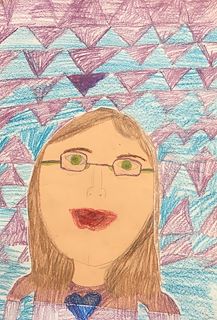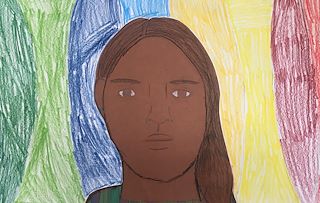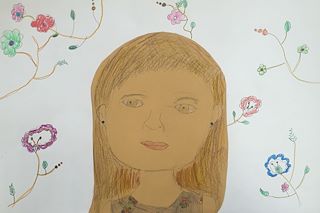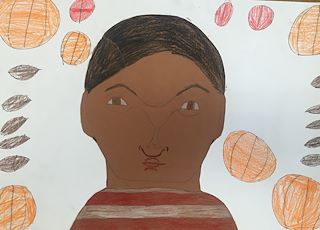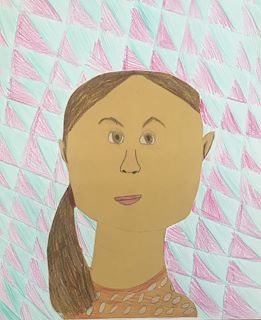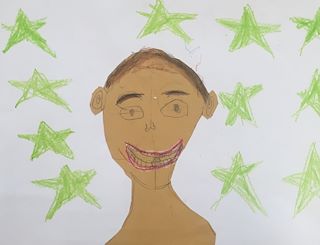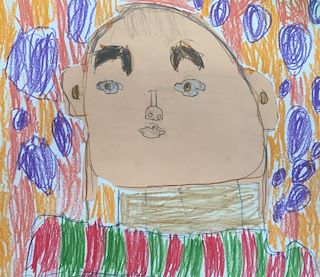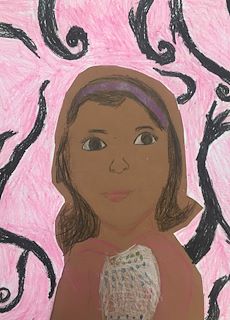
I hoped to spend more time on this unit, but the last day of school came quick this year. I did a similar project with the third grade last year, which you can read about on my post Click Here for Painting Portraits with Kehinde Wiley. Rather than focusing on the whole figure this year, we just worked on tightening up our facial proportions instead. Students watched an excellent video created by a child artists seen below, to help guide them step by step with their self portrait sketches they drew on the correct skin tone paper.
Students creating self portrait, while listening to video on their tablets
We began their self portrait unit by getting some inspiration from current African American Harlem based artist Kehinde Wiley. We analyzed his artwork and recognized how his figures often times are in a pose of power with elaborate patterns in the background. We examined his paintings alone and then next to their counterpart. Students quickly realized the striking similarities. After watching a quick clip on you-tube shown below, students were amazed how large Kehinde Wiley works and the process behind his large scale paintings. Wiley often chooses his models from the streets of his neighborhood in New York City and gets his inspiration from portraits of powerful men and women from 17th-18th century master artists, such as Jacques Louis David and John Singer Sargent. We watched how his team of artists aided him through the art making process by recruiting models and setting up photo shoots to generate images for Wiley to use while painting.
Kehinde Wiley combined the theme of "Old" and "New" in his paintings, by taking a poses from powerful people and vibrant pattern from the past with men and women of today showing off current clothing trends. As seen above, after students created their self portrait from observation, they used their homework assignment which was from the previous week to draw a picture of a pattern that was from something "old" and "meaningful" to them and they incorporated that into the background of their self portraits. In addition to focusing on Kehinde Wiley, we looked at one of my favorite Henri Matisse paintings which utilizes pattern as a main element in the work.
Napoleon Leading the Army Over the Alps, Kehinde Wiley
Napoleon Crossing the Alps, Jaques-Louis David, 1801-1805
Mrs. Waldorf Astor, Kehinde Wiley
Mrs. Waldorf Astor , John Singer Sargent, 1909
Video of Kehinde Wiley

Henri Matisse, Red Room (Harmony in Red), 1908
Student Art Examples

